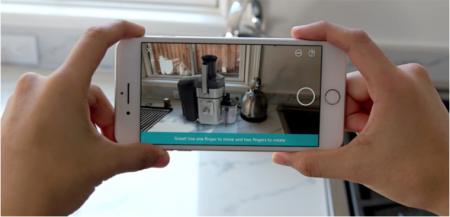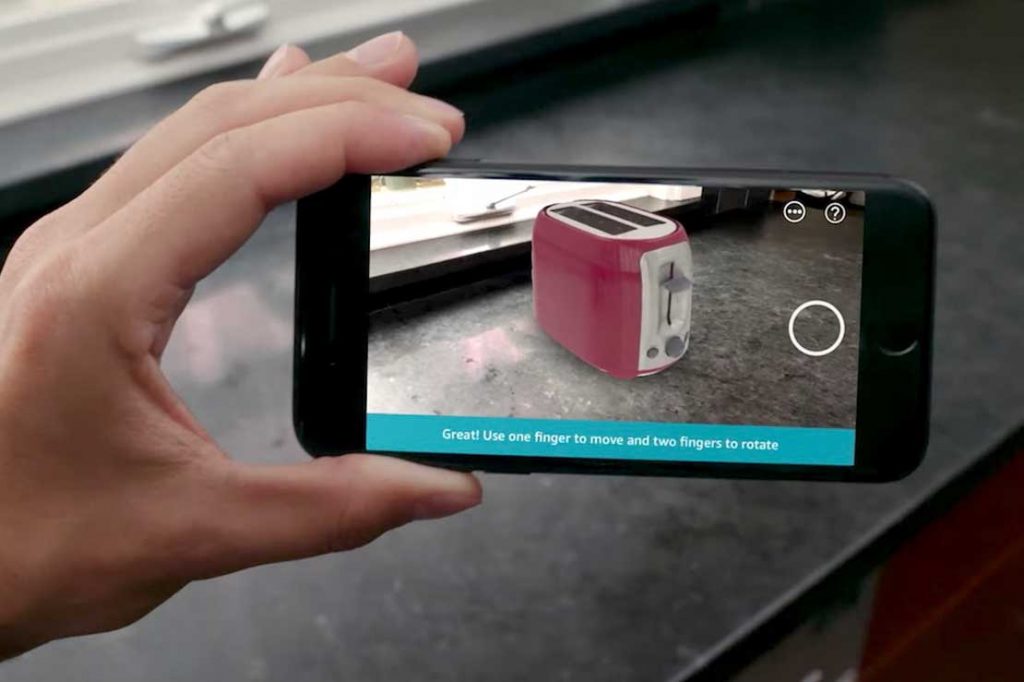
Augmented Reality: Building a Better Shopping Experience
It feels like not too long ago, concepts like Augmented Reality were hardly more than a fantasy. Yet today, the consumer world is changing and these ideas and technologies are finding a place in the way we browse and buy. The growth of online shopping has been particularly rapid, and the convenience offered to consumers is enticing. Despite this, there is still some hesitation from buyers to actually order online vs in store. Why? They can’t really engage with the products.
One of the biggest drawbacks to online shopping is the lack of sensory experience. An advantage brick and mortar has over online retailers is the ability to touch and try on merchandise. So, how do digital channels close the gap? With immersive technologies like Augmented Reality.
The Numbers
According to a recent study done by AdTaxi, 66% of respondents make at least one online purchase each month. In that same study, 10% of those surveyed answered that they had previously used AR for online shopping, and 67% said that they would stop shopping in-store for clothing if augmented virtual experiences made it possible online.
With numbers like those, it is clear why eCommerce champions like Amazon and Target have turned to AR technology. Amazon launched AR View for iPhone and Android, allowing users to view products in their home before buying them. Amazon aims to address online shopping challenges by using product images that are sized and rendered to help consumers see how they will fit into their personal spaces. Thousands of products are currently available, and more are to be added each week.

Similarly, Target has a feature on their site called See it in Your Space. Users are prompted to upload an image of the room they are decorating and say “Goodbye to the Guesswork”. Currently, the site has a few hundred products available from six different brands. Target also offers two other virtual shopping experiences with 360° Shoppable Rooms and Room Designer.
AR in Fashion and Beauty
Fashion and beauty brands are taking their swing at this emerging technology. Last year at CES (Consumer Electronic Show), Gap debuted its AR app DressingRoom. It allows users to select a body type that matches their own and try out selected outfits on their mannequin. Eyewear companies like Ray-Ban and GlassesUSA offer virtual solutions to trying on glasses, helping buyers browse with confidence. Shoppers can upload an image of their face and try on multiple frames. Ray-Ban also makes suggestions for frames based on face shape through their Virtual Try-On tool.

Earlier this year, L’Oreal announced that it acquired Modiface, a company known for creating augmented reality beauty apps. Modiface has numerous patents that help users visualize makeup and hairstyles on themselves.
The Future of Commerce
An article published by Forbes points out that Augmented Reality will keep up with a new generation of shoppers. Sean Mao, president of Perfect365 (a digital beauty platform with 100 million users worldwide) writes “Imagine trying on 30 eyeshadows in 30 seconds without ever applying anything to your face.” This methodology will allow companies to help buyers shop conveniently and confidently. Whether it’s finding the right shade of lipstick, or the perfect glasses fame for your face type, the innovation behind AR will certainly play an important role in the evolving shopper experience.
